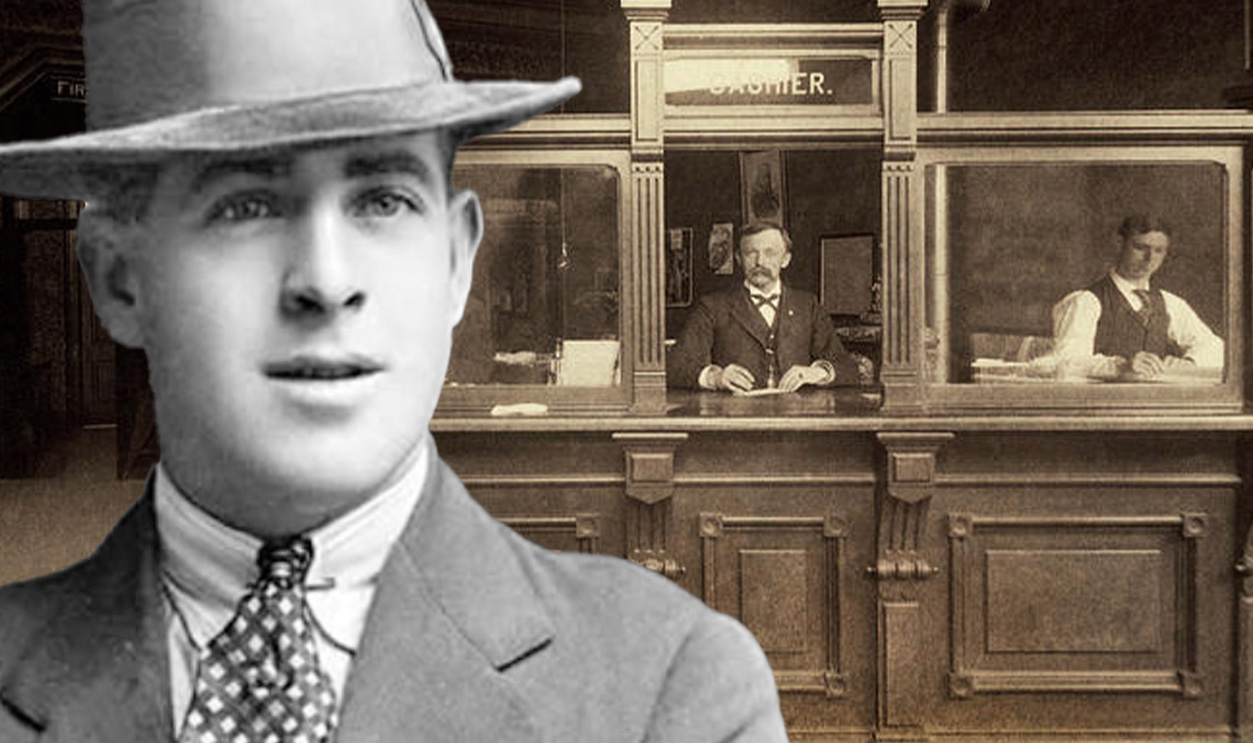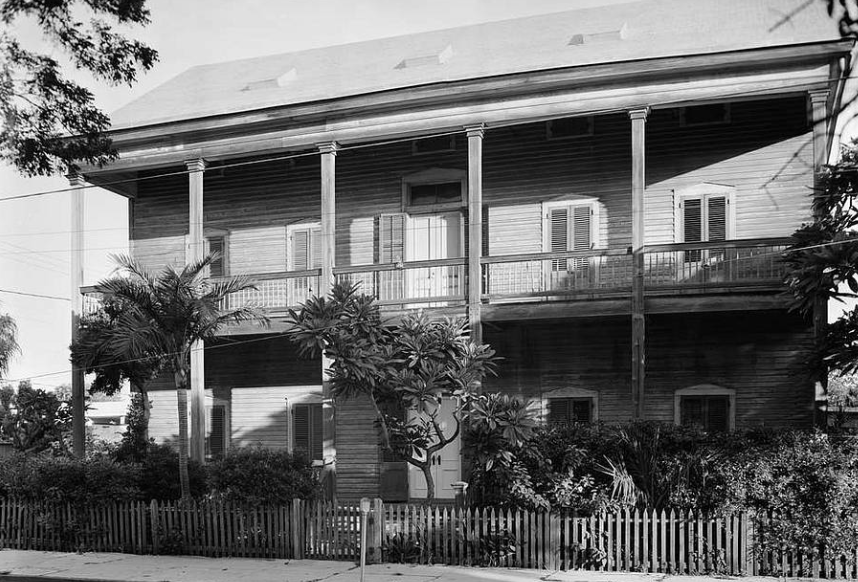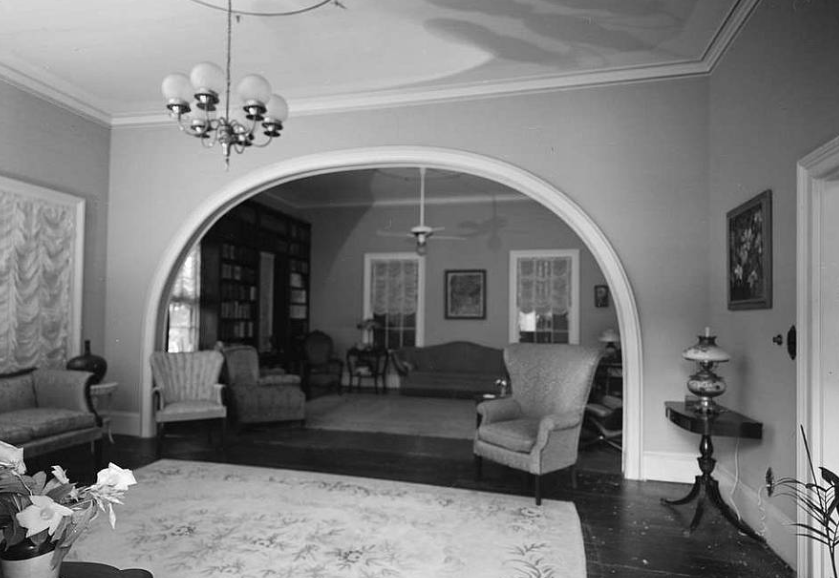A Batch Of Old Letters Discovered In An Attic Are Connected To Centuries-Old Bank Mystery
When a 10-year-old girl moved into a new home with her family in 1975 in Key West, Florida, she couldn't have imagined the discovery she'd make: handwritten letters that detail one of the state's largest financial crimes, written by either a very unlucky criminal—or a mastermind who got away with it all. Read on to discover what happened when Asia Palomba rediscovered the same letters that her mother, Stephanie Palomba, had found in her attic in 1975.

The House
10-year-old Stephanie Palomba's memory of her childhood home in Key West is somewhat faded. Still, she remembers that the house at 616 Caroline Street was a two-story, dilapidated "fixer-upper " that stood proudly between two palm trees.

A Move-In Day Discovery
Stephanie and her family had been in the house for only a few hours, sorting through various bits of broken furniture, dirt, and dust that littered the new family home, when she discovered a small box tucked away in the corner of the attic.

The Letters
Upon opening this box, Stephanie uncovered 20 handwritten letters dated between 1913 and 1915. The handwriting was messy cursive, and Stephanie (too young to decipher) gave the letters to her father, who tucked them away, probably to look at later. He never did, and neither did her mother. Nevertheless, the letters followed the family when they moved to Italy, shoved inside a plastic bag in a cardboard box.
Almost 40 Years Later
Nearly 40 years after the letters were first discovered in the attic, Stephanie Palomba was sorting through her then-deceased father's items. She rediscovered the letters in the same small plastic bag: "They were part of my memories of being there as a little girl, and I knew they were going to be of some historical significance".
A Family Heirloom
So Stephanie Palomba, still unable to decipher the letters, passed them on to her daughter, Asia. They became something of a family heirloom—although Asia had decided she would be the person to decipher them.
A First Look
At first glance, the letters chronicled writings between two men: James L Johnson and EM Martin. According to the US Census, James Johnson lived at 616 Caroline Street and was a cashier. EM Martin was Vice President of Island City National Bank, where Johnson also worked. Were the letters a correspondence between forbidden lovers? Two friends who lived too far away to meet regularly for a coffee? Or something far more sinister?
Island City National Bank
Both men worked at Island City National Bank, so why not catch up when they saw each other at work? Aside from the optics of a VP mixing with a lowly cashier, Island City National Bank was a rather peculiar institution. Sure, it was a bank. But it had been a bank that stretched across continents, countries, and cities, with each new location bringing a dramatic story.
A Lonely Physician Working For A Bank
In 1890, 30-year-old EM Martin had arrived completely alone in Key West, Florida, from Lancaster, Pennsylvania. Then a physician, Martin struggled to find work as a doctor, eventually taking a job at Tropical Investment Company, a real estate and loan association. He became their secretary, then assistant manager.
Island City National Bank Opens In 1905
While working at Tropical Investments, Martin was tipped by its president to be the vice president of the new Island City National Bank the company was opening. This meant a huge pay raise and more opportunities to run the show, and Martin enthusiastically accepted the offer.
Trouble Afoot In 1914
At the outbreak of World War I, financial troubles began brewing for Island City National Bank. It's not clear how Martin and Johnson met. Still, the pair began correspondence around 1914, with Martin sending Johnson letters from Miami, New York, and Washington, DC, where he traveled to seek investors and loans to keep the bank afloat.
Shutting The Doors One Year Later
In 1915, facing crushing debts from substantial loans from three other banks and one trust company, Island City National Bank closed its doors. Even the newly created Federal Reserve couldn't save the bank. In the early 20th century, it was common for banks to open and close within a few years.
The Backstory Of An Economic Pitfall
When EM Martin arrived in Key West in 1890, the city began declining. Before the Civil War, it had been one of Florida's most populated places, prospering thanks to the sponge trade.
Sponge Sought Elsewhere
By the time Island City National Bank opened in 1905, this economic downturn was well and truly in full swing. The sponge trade that had kept Key West afloat had gone elsewhere; the steamships that used to roll in and out of the harbor in Key West drifted elsewhere, too.
A Dire Situation
The confluence of these factors meant that in 1915, Island City National Bank was facing financial ruin. According to Martin's letters to Johnson, the bank had many "interested parties" making "indefinite inquiries". But the money never seemed to show up.
City Island National Bank Closes Its Doors
After months of letters from other banks threatening to withdraw their loans, City Island National Bank closed its doors for good. Its vice president, reportedly in Miami and Washington, had absconded, seeking last-ditch investment offers to save the bank. Vice President Martin's last correspondence with anyone came in a July 7th letter to James Johnson. One day later, Martin disappeared without a trace.
Martin's Sister Reaches Out To Johnson
EM Martin may not have mentioned his sister, Agnes, in his correspondence with the cashier, but it was Agnes who wrote to Johnson following Martin's disappearance. "Let go now if you truly see that you are truly getting in deeper and deeper," she warned. Perhaps a cryptic warning about the depths that her brother had sunk to save the bank?
An Unfortunate Son
On July 23rd, City Island National Bank closed its doors, and news of its missing vice president spread like wildfire. Then, a man claiming to be Martin's son contacted James Johnson. The exact details of their correspondence are a mystery.
The Loan Sharks Come For Their Money
A few months later, Miami National Bank, which had loaned Martin $3,182,00, came calling for their money—about $97,000 in today's US dollars. It turns out that Martin (and the bank) didn't have any money because Martin had been "borrowing from Peter to pay Paul," as it were. That is, Martin had siphoned any money received by Island City National to keep Tropical Investments afloat, as it, too, was failing.
An International Manhunt
The depths of EM Martin's financial fraud sparked an international manhunt for the man. The bank's investors got the United States Secret Service involved, whose vast resources were brought to bear on the task of finding EM Martin. After two years, in 1917, Martin was located in Australia, according to the Tampa Tribune.
A New Man
What would you do if you had committed thousands of dollars of financial fraud, were in too deep with the wrong people, and decided to flee the country? You probably wouldn't return to the US under a pseudonym, right? But Martin did. A Florida Keys History Center historian says that Martin began to live under an assumed name, "John Porter Williams", in Oklahoma City upon returning from Australia.
A Convenient Amnesiac?
In November 1925, Commercial Appeal published a profile on EM Martin (or John Williams). The profile claimed that Martin suffered from amnesia and had no recollection of his life prior to July 11, 1915, which just so happened to be around the time the bank went belly-up.
More Letters Tell The Tale
Whether Martin's amnesia was real or not, he seemed to think so. In a 1921 letter to an acquaintance, he wrote, "Sometimes I have a feeling that this experience (whatever it is) that I am going through has happened before. And what is more satisfactory, a feeling that it may happen again".
A Memory Lost, But A Skillset Retained?
Despite Martin's apparent amnesia, he retained his financial skillset (which is more suspicious) and became head of the Mutual Savings and Loan Association. The irony here is hopefully not lost on you. Around this time, his memory became clearer, and he began inquiring about Agnes and John's identities and whereabouts.
A Christmas Reunification
After publishing a picture of himself in a newspaper, one of Martin's long-lost cousins spotted the image and notified Agnes. Her brother was alive, but, heartbreakingly, he had no recollection of her. The pair would arrange to meet up over Christmas and reunite.
The First Bout Of Amnesia Is Revealed
A shocking revelation in the profile in Commercial Appeal was that Martin had gone through amnesia before. Indeed, he had been married in the late 1880s and had an ex-wife and a young son. That marriage had been so miserable that it had triggered a mental breakdown in Martin that had triggered his first bout of amnesia.
Disappearance And Reappearance In Key West
Following this mental break and subsequent amnesia, Martin disappeared from the family home in Tennessee, losing his memory and believing his name to be John Porter Williams. It took a while, but Martin/Williams went home to Tennessee, whereafter his wife divorced him, and he was forced to look to Key West for a new life.
Was EM Martin's Amnesia Real?
Amnesia tends to occur when people are under immense psychological stress. It's your brain's way of protecting itself and you from catastrophic psychological damage. Therefore, it stands to reason that EM Martin, or John Porter Williams, may have experienced four bouts of amnesia when he began his life again in the finance world, after leaving behind institutions in ruins, and twice during this alternative life, when he believed himself to be John Porter Williams.
Or Was It Just A Convenient Excuse?
It must be said that Martin's amnesiac bouts came at awfully convenient times. Oh, your marriage is failing and you're unhappy, so you'll just skip out and then forget it ever happened? Right. Or, you've led a banking institution to the brink of collapse, are thousands of dollars in debt, so you disappear and then conveniently can't remember anything just a few days after everything comes crashing down? Sure. Sounds plausible.
The Unanswered Questions
Much remains a mystery about the lives of EM Martin (or John Porter Williams) and John Johnson. What was Martin doing while in Australia? What exactly happened after his discovery—why was he allowed to return to the US unimpeded? John Johnson held on to Martin's letters for 45 years—clearly they meant something to him. But what, and why?
What Do You Think?
Do you think EM Martin's amnesia was real? Or was it merely a ploy to get out of a tight situation? What do you think he was up to in Australia? Let us know your thoughts on the mysterious letters in the attic in the comments.